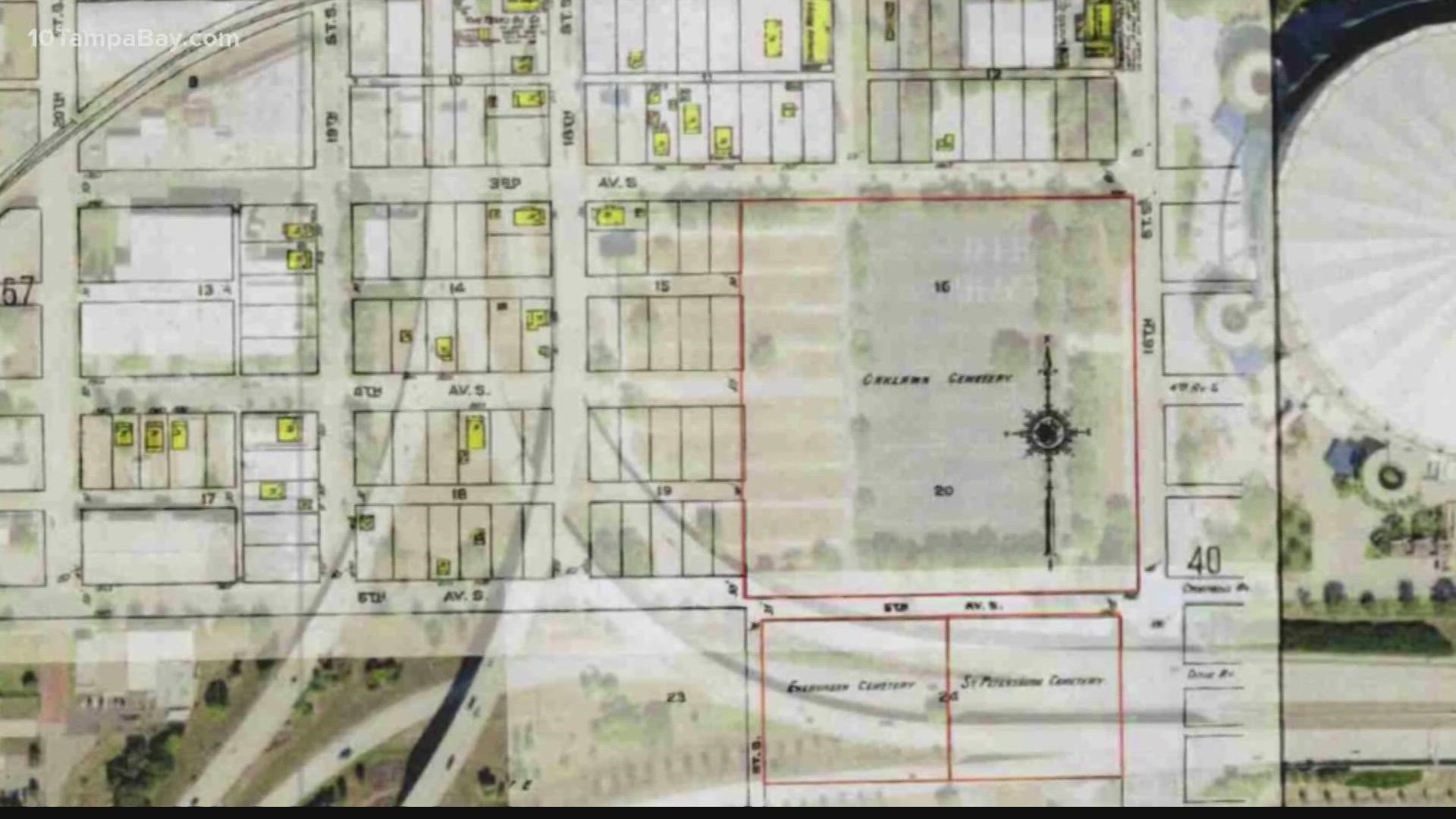SAINT PETERSBURG, Fla. — After months of research and physical searching, archaeologists reported to the city of St. Petersburg that ground-penetrating radar detected at least three graves from the old Oaklawn cemetery in a parking lot at Tropicana Field.
10 Tampa Bay’s Emerald Morrow spoke to archaeologists behind the search about their findings.
NOTE: This conversation has been edited for length and clarity.
Reporter: Cardno has spent a significant amount of time investigating the possibility of graves on parking lots surrounding Tropicana Field. Your ground-penetrating radar search found at least three grave-like objects and reported these findings to the city of St. Petersburg. What are the main highlights of your report?
Rebecca O’Sullivan, Cardno: We did find some indication of some possible burials that are on the property, but then we also found a lot of other disturbances from like the apartment building that was there…there's been a lot of uses of this property over time. And so, we see that reflected in the GPR results that we have for the for the property, too.
Paul Jones, Cardno: One of the things I think that that we've noticed compared to a lot of the cemeteries that we've looked at is that there were a lot more of the graves removed from the cemetery. It looks like they made a good faith effort to remove graves.
And, you know, as we've talked about in the past, often graves are either not marked, they’re mismarked, you know, stones are moved or are stolen or whatever. And it's very hard to get every single set of remains from a cemetery, but it looks like in this case there was a fairly good faith effort in the areas that we tested.
Now, there are other areas where the soil is deeper, where we may have additional findings, and that's part of our next phase of the work we're doing with the city mentioned.
Reporter: The next phase of work includes a new proposal to the city. Can you explain what that will entail?
O’Sullivan: Usually doing some kind of ground truth thing so that we can really verify what's actually there and if graves were really removed or, you know, what does it actually look like beneath the surface?
Reporter: What is the history of Oaklawn cemetery?
Kimberly Hinder, Cardno: Oaklawn was founded by the Order of Odd Fellows, and the Carpenters and Joiners union in 1907. So, it was one of the earliest cemeteries. Moffett, which is directly below or south of it, was an earlier cemetery and Evergreen was founded the year after. So, from the time it was founded, it appears to have been a white cemetery. Although it doesn't necessarily mean that there weren't some African Americans, buried in there that would some of that would be part of our next phase, researching into the ethnicity of the people that are buried there finding the people that were buried there and what their history is so we can talk to the appropriate descendants.
Reporter: What about the two adjacent cemeteries, Evergreen and Moffett?
Jones: One of the things that has happened in cemeteries that we've looked at is, most of the African American cemeteries…there were far fewer formal gravestones, located in African American cemeteries back during this time period. They were often marked with stones or wooden markers or flowers or vases or that sort of thing as opposed to what we think of as a grave marker as a gravestone.
So, often…when folks come to remove the remains, we often see that they miss a great number, and it's often due, I think, in fact to the, to the situation that there just aren't as many markers for African American cemeteries as there are for white cemeteries at that time. It’s a shame because it makes it very difficult to relocate or to find the remains of African American burials. And, and so we, we want to be careful to say that they may have made it an effort to move people but if they didn't have a way to relocate them. The maps are non-existent or hard to find or destroyed over time. And it's really a shame that it ends up with an awful lot of people being left behind.
Emerald Morrow is a reporter with 10 Tampa Bay. Like her on Facebook and follow her on Twitter. You can also email her at emorrow@10TampaBay.com. To read more about the search for lost African American burial grounds in the Tampa Bay area, head to 10tampabay.com/erased.

